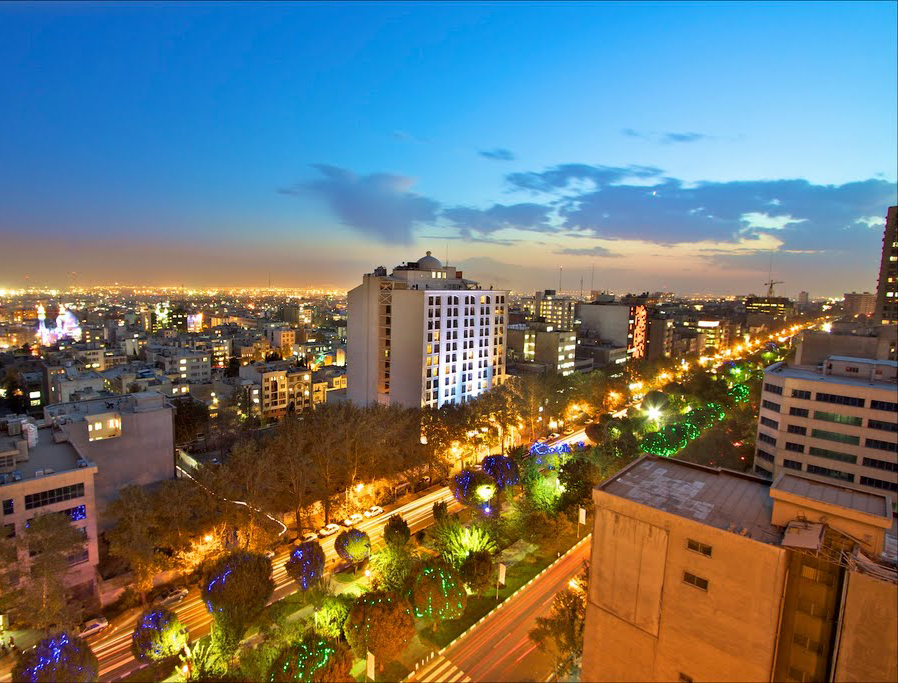Led by an English-speaking guide, a group of tourists from Germany, Switzerland and Australia admire the large, stained-glass windows of the lavish Golestan Palace. The walled complex, with 17 different buildings, museums and enough gold and cut crystal to compete with St. Petersburg’s Winter Palace.
For the first time in decades, Iran is steadily in the travel pages of British newspapers. The Financial Times, The Daily Telegraph, and others have branded it the next, “new” destination for adventure travelers; new, but old.
Iran is starting to see a tourism turnaround. Since the new administration over a year ago, with more liberal views and an interim nuclear agreement, tourism has risen rapidly. The tourism ministry has cited a 240 percent increase in European visitors, alone. That figure may seem high, but sources from other parts of the tourism industry agree.
A Change
Arshan used to work one or two days a week as a tour guide in Tehran. Now, he tells Rudaw, the Kurdish media network, “There’s a completely different change in tourism. I work seven days a week, sometimes double and triple days, with airport transfers. “
The people using those airport transfers are also filling up hotels.
Amir Mousapour manages the front office at the Espinas Hotel, the only privately-owned, post-revolution five-star hotel.
“After Rouhani took office, we don’t advertise. When he came to power, there was a feeling Iran would be open for business to tourists and there has been a big change.”
Mousapour says the Espinas went from a 45-50 percent occupancy rate to 80 percent full. And it’s not just about business picking up; Mousapour explains the kind of tourists coming marks a big change, too.
“Previously guests were only from Asia and not the EU. But now, it’s a lot of EU, US, British and Australian guests, tourists and government ministers.”
The government is encouraging hotel development with attractive loans. The Espinas will open a second Tehran property, with a helipad and an air taxi, next year.
The 57-year old from Wales says the biggest surprise was the visibility of Iranian women.
“Women are everywhere; they’re on the streets, they’re in big jobs. There are more women in higher education than men.”
American Frances Broaddus-Crutchfield first visited Iran three years ago. She returned in October, on the inaugural journey of the Blue Eagle Danube Express, the first western train to complete the trip. She says things were different this time.
“I had the chance to talk to a local, who volunteered that he was very happy with the potential for relationships with other countries.”
That wasn’t the only change Broaddus-Crutchfield noticed.
“It’s more crowded… there were people milling around everywhere. I’m sure there were more tourists, particularly in train stations and at the airport.”
Potentials
A good indicator that a greater number of westerners are visiting the country is the increased in demand for food tourism.
Fatemeh Fereidooni established her travel agency two years ago, and is the first to lead culinary tours. She says much of the demand is from Australians, like one woman who requested a three-day tour of Tehran’s tea shops, bakeries and coffee houses.
Fereidooni explains that Iran has an inherently rich food culture, with eight different kinds of bread in Tehran alone, 10 different kinds of dried plums, a city with 15 different sweets -- and the list goes on, she says.
Everyone connected to Iran’s tourism industry shares a collective excitement about its potential, but there’s also an awareness, that the hospitality sector must grow alongside visitor numbers.
David McGuinness owns London-based tour operator Travel the Unknown. He’s seen interest in Iran rise 350-400 percent over the last year, and says the hardest part now is identifying local tour guides who can provide specialist tours.
For example, Tehran’s urban art scene is vibrant. The government pays big name, and lesser-known artists to beautify buildings. All of the artwork is different, from tile mosaics, to abstracts, portraits of members of parliament and simple, bright flower cut-outs. In any western city, there would be a tour of such a vibrant and active street art scene. Not in Tehran. McGuinness says that’s part of the problem.
“We’d love to expand our offerings to include a gentle walking tour taking in local villages, or a tour of Tehran’s murals, but these things are so new there. We’re working on finding people who can do these tours well.”
And, at the Espinas, Mousapour, who was educated in Europe, says Tehran needs more infrastructure and education to welcome guests.
“We need accommodation, transfers from the airport, restaurants and education for hospitality in our universities. We need our young people to learn how to present service in hotels. We don’t have enough English speakers.”
He acknowledges that hospitality is a cornerstone of Iranian culture: “but service doesn’t come naturally to us.”


